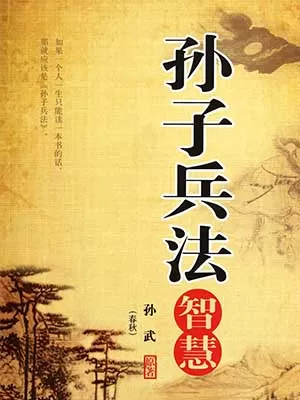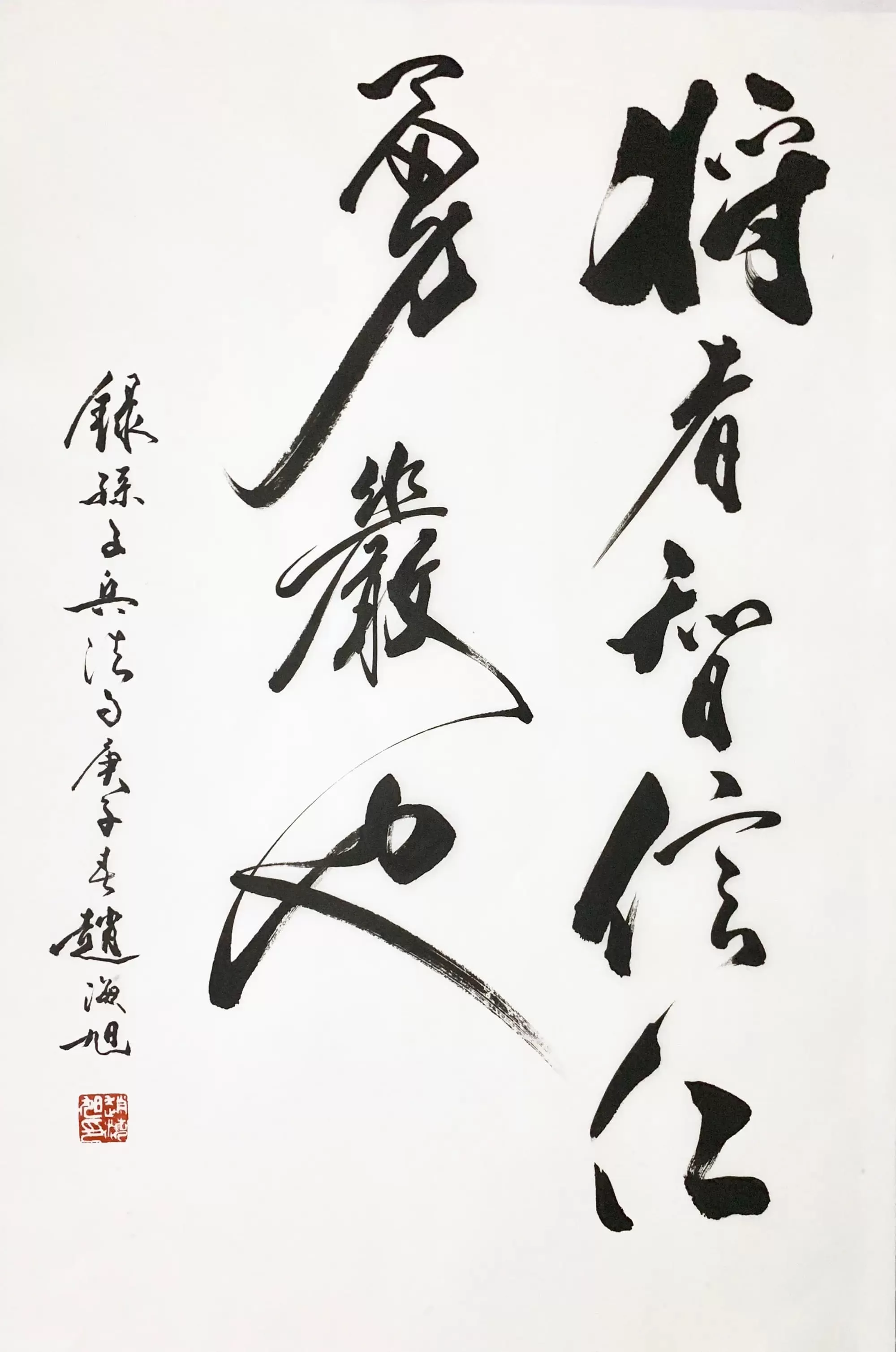
The Art of War, also known as Wu Sunzi's Art of War, Sunzi, or Sun Wu's Art of War, is one of the ancient Chinese military treatises. It is the earliest extant military book in China and one of the earliest military works in the world, revered as the "sacred scripture of military science" and placed at the forefront of the Seven Military Classics. The author is Sun Wu, a native of the State of Qi during the Spring and Autumn Period.
With a history of 2,500 years, The Art of War has been studied by generations. The book comprises around 6,000 characters and consists of thirteen chapters (Calculations, Waging War, Attack by Stratagem, Tactical Dispositions, Energy, Weak Points and Strong, Maneuvering, Nine Variations, The March, Terrain, The Nine Situations, Fiery Attack, The Use of Spies). When Sun Wu arrived in the State of Wu after various travels, he coincided with the coup d'état led by Prince Guang. After Prince Guang ascended the throne, Wu Zixu, hearing of Sun Wu's talents, recommended him to the King of Wu. Sun Wu presented these thirteen chapters to the King and was subsequently entrusted with important military responsibilities. The Art of War inherits and develops previous military theories, placing politics as the primary factor determining the outcome of war. It summarizes the principles of war, detailing pre-war preparations, strategic applications, battle deployments, enemy situation analyses, and more, with meticulous explanations that are comprehensive and rigorous, embodying simple materialist dialectical thinking.
The Art of War is a splendid gem in ancient Chinese military cultural heritage and an integral part of excellent traditional culture. Its content is profound and extensive, its thoughts are deep and rich, and its logic is meticulous and rigorous, representing the essence of ancient military thought. For over two millennia, it has been regarded as a classic of military strategy and still holds significant practical relevance today. Mao Zedong highly esteemed The Art of War, and the virtues advocated by Sunzi—wisdom, trustworthiness, benevolence, courage, and strictness—have become the "martial ethics" of Chinese soldiers.
The Art of War, also known as Wu Sunzi's Art of War, Sunzi, or Sun Wu's Art of War, was written by Sun Wu, styled Changqing, a native of the State of Qi in the late Spring and Autumn Period who fled to the State of Wu, assisting the King of Wu in governing the country and commanding the army, gaining fame among the vassal states and being honored as the "Sage of War". The Art of War is acclaimed as the "sacred scripture of military science" and the "first military book of antiquity". It has played an extremely important guiding role in ancient Chinese military academics and warfare practices.
As the earliest extant military book, The Art of War has always been highly regarded, with numerous scholars dedicated to its study. The thirteen chapters each begin with "Sunzi said," and are structured thematically with clear centers, hierarchies, rigorous logic, concise language, and a plain style, adept at using parallelism and elaboration, with vivid and specific metaphors. For instance, when describing military movements: "Swift as the wind, slow as the forest, aggressive as fire, immovable as a mountain, mysterious as the yin, thunderous when moving" (Maneuvering). These descriptions are both apt and vivid, with a sonorous rhythm and impressive momentum, leading Liu Xie to remark, "Sun Wu's military classic has words like pearls and jade" (The Literary Mind and the Carving of Dragons: On the Nature and Craft of Literature). It seems that for Sun Wu, structuring an article with the meticulous thinking of warfare was as effortless as cooking a small fish.
"War is a matter of vital importance to the state; it is the domain of life and death, the way to survival or extinction, and therefore it must be thoroughly examined." The Art of War inherits and develops previous military theories, placing politics as the primary determinant of war's outcome, summarizing the principles of war, and providing detailed explanations on all aspects of pre-war preparations, strategic applications, battle deployments, enemy situation analyses, and more, with comprehensive and rigorous details, embodying simple materialist dialectical thinking. For over two millennia, it has been regarded as a classic of military strategy and still holds significant practical relevance today. Mao Zedong highly esteemed The Art of War, and the virtues advocated by Sunzi—wisdom, trustworthiness, benevolence, courage, and strictness—have become the "martial ethics" of Chinese soldiers.
The earliest extant version of the book is the bamboo slip version of The Art of War unearthed from a Han Dynasty tomb in Yinqueshan, Shandong, in 1972. Unfortunately, it is incomplete, and the full text cannot be discerned. After being organized by a team of experts on Han Dynasty bamboo slips, it was published by the Cultural Relics Publishing House in 1975. The earliest extant engraved version is the Eleven Commentaries on Sunzi from the reigns of Emperor Xiaozong and Guangzong of the Southern Song Dynasty. There is also the Seven Military Classics version of Sunzi, photocopied by the China Academic Art Society in 1935. The earliest commentary is attributed to Cao Cao, with the Sunzi included in the Wei Wudi's Sunzi from the Pingjin Pavilion Series, a facsimile of an Song Dynasty edition. Subsequently, many commentators emerged, such as Sun Xingyan's Ten Commentaries on Sunzi, Zhu Yong's Collected Explanations of the Seven Military Classics, Xia Zhenyi's Comprehensive Explanation of the Military Classics with Annotations: Sunzi, Yang Bing'an's modern Collected Notes on Sunzi, and contemporary works like Wu Jiulong's Collated Explanation of Sunzi and Wu Rusong's New Treatise on Sunzi's Art of War.
The Art of War, also known as Sun Wu's Art of War or Wu Sunzi's Art of War, is the earliest extant military book in China and one of the earliest military works in the world, predating Carl von Clausewitz's On War by about 2,300 years. It is revered as the "sacred scripture of military science". The extant version comprises around 6,000 characters, divided into thirteen chapters. The author is Sun Wu, a general from the State of Wu with ancestral roots in Le'an, Qi, during the Spring and Autumn Period.
The Art of War is a splendid gem in ancient Chinese military cultural heritage and an integral part of excellent traditional culture. Its content is profound and extensive, its thoughts are deep and rich, and its logic is meticulous and rigorous, embodying the essence of ancient military thought.
The Art of War is revered as a classic of military strategy. With a history of 2,500 years, it has been studied by generations. Li Shimin said, "Among all military books, none surpass Sun Wu's." Military strategy is about grand strategy and wisdom, not petty tricks. Today, The Art of War has gone global. It has been translated into multiple languages and holds an important position in world military history. The bamboo slip version of The Art of War from the Han Dynasty was unearthed from a tomb in Yinqueshan, Linyi, in 1972.

Provides The Most Comprehensive English Versions Of Chinese Classical Novels And Classic Books Online Reading.
Copyright © 2025 Chinese-Novels.com All Rights Reserved
